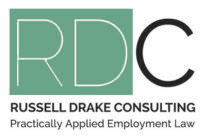It is not an uncommon situation that an employee terminates their employment and does not return all company property or repay any outstanding debts. Where the employee has wages or annual leave entitlements owing to them, subject to the deduction provisions of section 5 of the Wage Protection Act 1983, some amount of recovery may be able to be lawfully made.
However, problems arise where there is no final payment owing or where the balance of any payment owing is insufficient to cover the outstanding debts.
This was a situation recently brought to the Employment Relations Authority (ERA) by CTR Roofing Limited.
Mr Cross was an employee of CTR until his employment was terminated, initially on the basis of serious misconduct in September 2022, but finally by way of resignation after the company had agreed to give him a second chance. At the time of the resignation occurring, Cross was in possession of a number of items belonging to CTR, including yard keys, a cell phone and tools. In addition, due to an earlier arrangement where Cross had purchased a vehicle off CTR and was repaying this through regular deductions from his wages, Cross also owed CTR for the remaining purchase balance.
Despite the best efforts of CTR to seek payment from Cross after the ending of the employment relationship, Cross failed to acknowledge the debt, or even engage with the company over his repayment obligations. The total debt owed by Cross to CTR at that time amounted to $3,803.76.
With no communication from Cross, CTR filed a Statement of Problem at the ERA to seek a compliance order requiring Cross to either return the outstanding equipment or pay the full value of the debt to CTR.
Cross elected not to engage in the ERA process, with the ERA being convinced that CTR had taken all required steps to serve the Statement of Problem on him. On this basis, the ERA confirmed that they had the jurisdiction to issue a compliance order pursuant to s137 of the Act.
The Compliance Order then required Cross to return the company property by a defined date, and similarly to also pay the outstanding balance of the vehicle purchase by the same date.
As CTR was the successful party in the proceedings, the ERA also ordered Cross to pay CTR’s legal costs in bringing the successful claim. This now increased Cross’s debt to the company from the original $3,803.76 to $9,717.33.
Within the Determination https://determinations.era.govt.nz/assets/elawpdf/2023/2023-NZERA-497.pdf the ERA also confirmed that, should Cross not respond to the compliance order as required that “Imposition of a compliance order is a serious matter. If Mr Cross fails to comply with this compliance order, CTR may apply to the Employment Court for it to exercise its powers under s 140(6) of the Act”. In such case, if the Court were required to rule on the matter, additional legal costs would be added to the debt and should Cross then fail to pay that balance, the matter could be referred to the District Court. The Court could then consider this to be an outstanding fine for which an order to seize property from Cross to the full value of the outstanding balance could be issued.
While CTR may ultimately get justice from Cross, this will be an extremely long process reinforcing that the best way to avoid such situations from occurring is to ensure that sound processes are in place, along with the correct clauses within your employment documentation, to recover property and debts from the outset – particularly where an employee purchases property from an employer under a ‘pay as you go arrangement’.
If you have any situations that could have the potential to result in the company being left out of pocket on the termination of an employee’s employment, and you want to ensure that you have the best possible chance of recovering costs and equipment, please feel free to contact us to discuss your situation.

